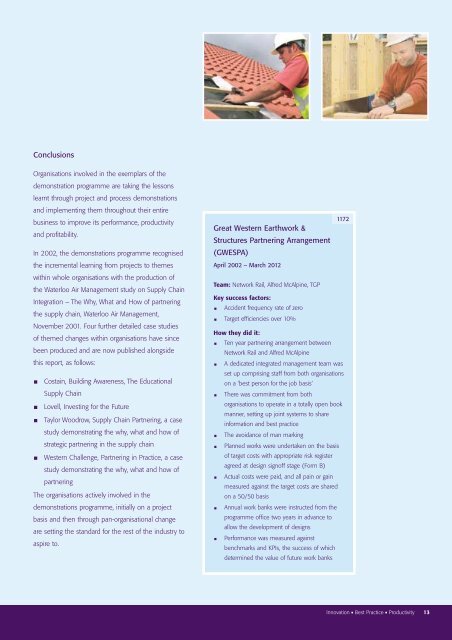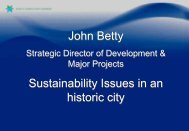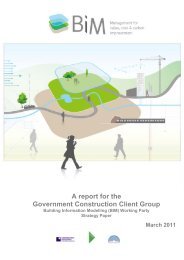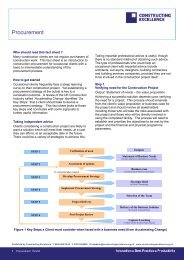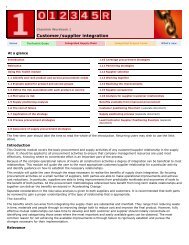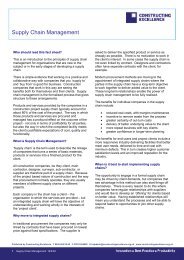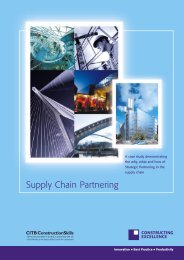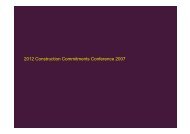Demonstrating Excellence Report - Constructing Excellence
Demonstrating Excellence Report - Constructing Excellence
Demonstrating Excellence Report - Constructing Excellence
- No tags were found...
Create successful ePaper yourself
Turn your PDF publications into a flip-book with our unique Google optimized e-Paper software.
ConclusionsOrganisations involved in the exemplars of thedemonstration programme are taking the lessonslearnt through project and process demonstrationsand implementing them throughout their entirebusiness to improve its performance, productivityand profitability.In 2002, the demonstrations programme recognisedthe incremental learning from projects to themeswithin whole organisations with the production ofthe Waterloo Air Management study on Supply ChainIntegration – The Why, What and How of partneringthe supply chain, Waterloo Air Management,November 2001. Four further detailed case studiesof themed changes within organisations have sincebeen produced and are now published alongsidethis report, as follows:Costain, Building Awareness, The EducationalSupply ChainLovell, Investing for the FutureTaylor Woodrow, Supply Chain Partnering, a casestudy demonstrating the why, what and how ofstrategic partnering in the supply chainWestern Challenge, Partnering in Practice, a casestudy demonstrating the why, what and how ofpartneringThe organisations actively involved in thedemonstrations programme, initially on a projectbasis and then through pan-organisational changeare setting the standard for the rest of the industry toaspire to.1172Great Western Earthwork &Structures Partnering Arrangement(GWESPA)April 2002 – March 2012Team: Network Rail, Alfred McAlpine, TGPKey success factors:Accident frequency rate of zeroTarget efficiencies over 10%How they did it:Ten year partnering arrangement betweenNetwork Rail and Alfred McAlpineA dedicated integrated management team wasset up comprising staff from both organisationson a ‘best person for the job basis‘There was commitment from bothorganisations to operate in a totally open bookmanner, setting up joint systems to shareinformation and best practiceThe avoidance of man markingPlanned works were undertaken on the basisof target costs with appropriate risk registeragreed at design signoff stage (Form B)Actual costs were paid, and all pain or gainmeasured against the target costs are sharedon a 50/50 basisAnnual work banks were instructed from theprogramme office two years in advance toallow the development of designsPerformance was measured againstbenchmarks and KPIs, the success of whichdetermined the value of future work banksInnovation ■ Best Practice ■ Productivity 13


